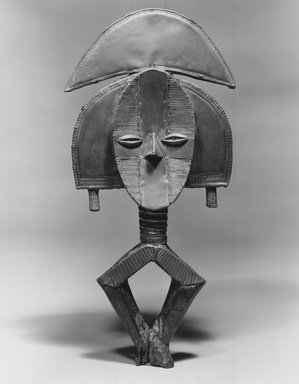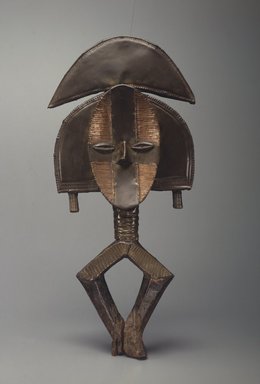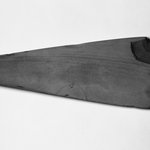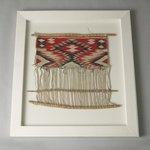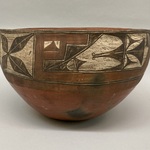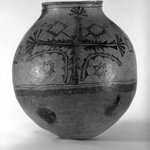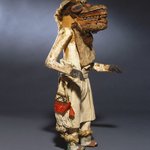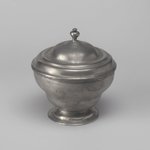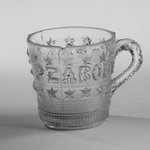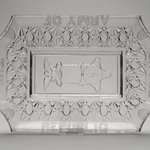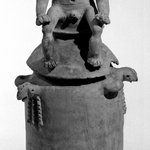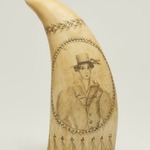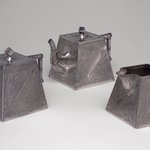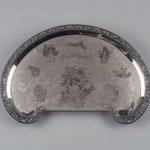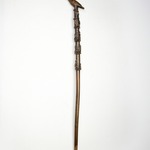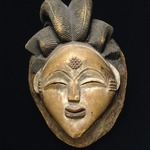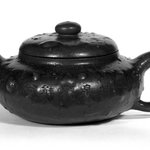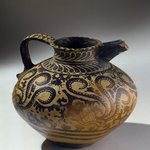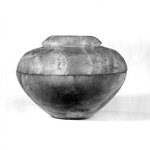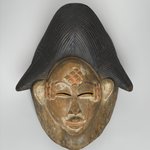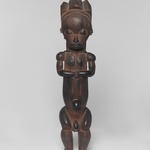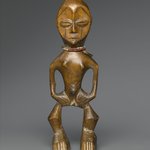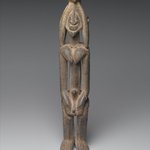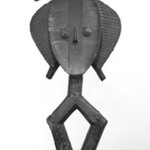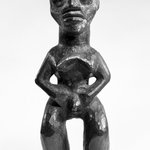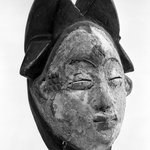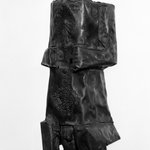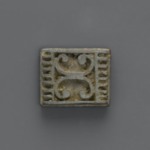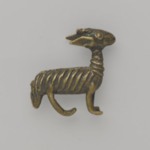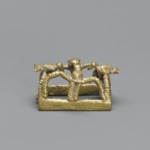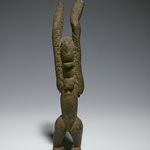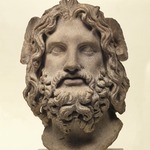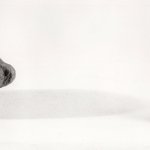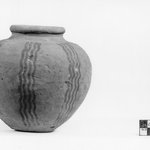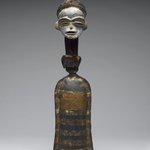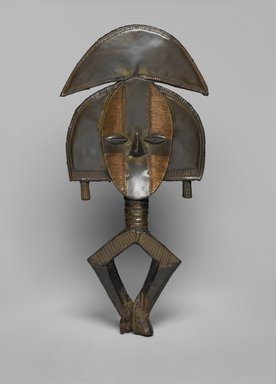

Kota. Reliquary Guardian Figure (Mbulu Ngulu), late 19th century. Wood, copper, brass, 20 1/4 x 8 3/4 x 2 1/4in. (51.4 x 22.2 x 5.7cm). Brooklyn Museum, The Adolph and Esther D. Gottlieb Collection, 1989.51.2. Creative Commons-BY (Photo: Brooklyn Museum, 1989.51.2_PS2.jpg)
Reliquary Guardian Figure (Mbulu Ngulu)
Arts of Africa
The Kota once used reliquary guardian figures (mbulu ngulu) to protect and demarcate the revered bones of family ancestors. The bones were preserved in containers made of bark or basketry. The mbulu ngulu stood atop this bundle, bound to it at the figure’s lozenge-shaped base. It is thought that the figurative form of the mbulu ngulu was intended to reinforce and communicate the reliquary’s intense power. Kota mbulu ngulu are unique among African sculptural forms in their combination of wood and hammered metal.
MEDIUM
Wood, copper, brass
DATES
late 19th century
DIMENSIONS
20 1/4 x 8 3/4 x 2 1/4in. (51.4 x 22.2 x 5.7cm)
(show scale)



COLLECTIONS
Arts of Africa
ACCESSION NUMBER
1989.51.2
CREDIT LINE
The Adolph and Esther D. Gottlieb Collection
CATALOGUE DESCRIPTION
Kota reliquary figure known as Bwiti. Carved wood covered with copper and brass metal strips, engraved with geometric patterns. Concave, oval-shaped face bisected with two broad metal strips; remainder of the face covered with horizontally placed narrow metal strips. Almond-shaped eyes, nail heads as pupils. Nose, pointed dihedral shape; no mouth. "Extended elephant ears" with pendant earring of engraved metal strips. Crescent-shaped headdress, engraved along outer edge. Neck covered wtih single metal strip, engraved. Diamond-shaped lower portion of sculpture, top half covered wtih metal strip, lower portion wood left uncovered. CONDITION: Bottom of wood base damaged, some portions rotted away.
EXHIBITIONS
MUSEUM LOCATION
This item is not on view
CAPTION
Kota. Reliquary Guardian Figure (Mbulu Ngulu), late 19th century. Wood, copper, brass, 20 1/4 x 8 3/4 x 2 1/4in. (51.4 x 22.2 x 5.7cm). Brooklyn Museum, The Adolph and Esther D. Gottlieb Collection, 1989.51.2. Creative Commons-BY (Photo: Brooklyn Museum, 1989.51.2_PS2.jpg)
IMAGE
overall, 1989.51.2_PS2.jpg. Brooklyn Museum photograph, 2007
"CUR" at the beginning of an image file name means that the image was created by a curatorial staff member. These study images may be digital point-and-shoot photographs, when we don\'t yet have high-quality studio photography, or they may be scans of older negatives, slides, or photographic prints, providing historical documentation of the object.
RIGHTS STATEMENT
Creative Commons-BY
You may download and use Brooklyn Museum images of this three-dimensional work in accordance with a Creative Commons license. Fair use, as understood under the United States Copyright Act, may also apply.
Please include caption information from this page and credit the Brooklyn Museum. If you need a high resolution file, please fill out our online application form (charges apply).
For further information about copyright, we recommend resources at the United States Library of Congress, Cornell University, Copyright and Cultural Institutions: Guidelines for U.S. Libraries, Archives, and Museums, and Copyright Watch.
For more information about the Museum's rights project, including how rights types are assigned, please see our blog posts on copyright.
If you have any information regarding this work and rights to it, please contact copyright@brooklynmuseum.org.
RECORD COMPLETENESS
Not every record you will find here is complete. More information is available for some works than for others, and some entries have been updated more recently. Records are frequently reviewed and revised, and we welcome any additional information you might have.
